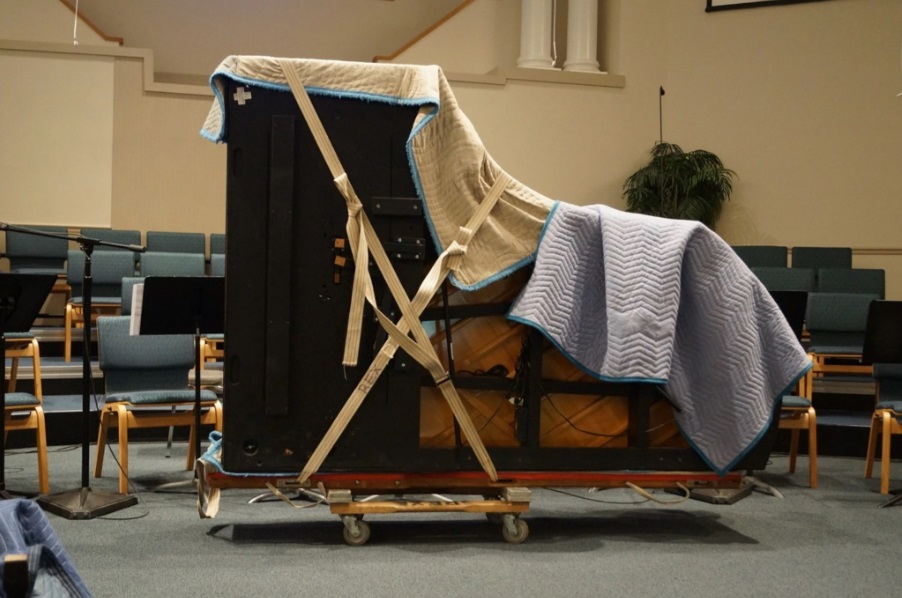
If you’ve ever tried moving a piano, you know it’s no simple task. Whether it’s a small upright piano or a grand piano that dominates your living room, these instruments are not only heavy but also delicate. One wrong move could cause damage to the piano, your home, or worse—injury. That’s why many people turn to professional movers. But one of the first questions homeowners ask is: how much do piano movers cost?
In this detailed guide, we’ll break down the average costs, factors that influence pricing, tips to save money, and what you can expect when hiring professional piano movers. By the end, you’ll have a clear idea of what budget to set aside when moving your prized instrument.
Quick Answer: Average Piano Moving Costs
The cost of piano movers in the U.S. typically ranges from $250 to $600 for a local move and $500 to $2,000 or more for a long-distance move.
- Upright pianos usually cost less to move, often between $250 and $500 locally.
- Baby grands and grand pianos are more expensive, often between $500 and $1,200 locally.
- Long-distance or cross-country moves can range anywhere from $1,000 to $5,000, depending on distance, logistics, and the type of piano.
Why Do Piano Movers Cost So Much?
Pianos are unlike regular furniture. Here’s why professional movers charge more:
- Weight and size – Pianos can weigh anywhere between 300 pounds (spinet piano) and over 1,200 pounds (concert grand piano).
- Delicate construction – They contain thousands of moving parts that can be easily damaged.
- Special equipment – Dollies, ramps, straps, and padding are required.
- Labor-intensive work – Moving a piano often takes 3–6 movers working together.
- Insurance and liability – Movers carry insurance to protect against potential damage, which adds to the cost.
So when you ask how much does piano movers cost, remember you’re not just paying for transportation—you’re paying for expertise and safety.
Factors That Influence Piano Moving Costs
Several factors can affect how much you’ll pay:
1. Type of Piano
- Upright piano: Easier to move, lower cost.
- Baby grand: Larger, requires disassembly and reassembly.
- Concert grand: Extremely heavy and requires more manpower.
2. Distance of the Move
- Local move (under 50 miles): Flat rate, usually between $250–$600.
- Long-distance move: Based on mileage and logistics, often $500–$2,000.
- Cross-country move: Can reach $3,000–$5,000.
3. Accessibility
- Stairs, narrow hallways, or sharp turns can increase costs.
- Moves requiring cranes or hoisting through windows add hundreds of dollars.
4. Time of Year
- Summer and weekends are peak moving times, leading to higher rates.
- Off-season moves (fall/winter weekdays) may be cheaper.
5. Additional Services
- Storage: If your piano needs to be stored, expect to pay $50–$100 per month.
- Tuning: After moving, many owners pay $100–$150 for a tune-up.
- Disassembly/Reassembly: Can add $100–$300 depending on piano type.
Local Piano Moving Costs Breakdown
For local moves, movers often charge a flat fee based on piano type and location challenges. Here’s a typical breakdown:
| Piano Type | Average Cost (Local) |
| Spinet/Upright | $250 – $500 |
| Baby Grand | $400 – $700 |
| Grand Piano | $600 – $1,200 |
| Concert Grand | $1,000+ |
Extra costs may apply for:
- Flights of stairs: $50–$100 per staircase.
- Difficult entryways: $100–$300.
- Hoisting with crane: $500–$1,000.
Long-Distance Piano Moving Costs
For long-distance or interstate moves, movers typically calculate costs by weight and distance.
- Short interstate (100–300 miles): $500–$1,200.
- Medium distance (300–800 miles): $1,200–$2,500.
- Cross-country (1,000+ miles): $2,000–$5,000.
Since pianos often require special handling, many long-distance moving companies subcontract piano specialists, which can raise the price.
Additional Cost Considerations
1. Insurance Coverage
Most movers include basic liability coverage, but this may only cover a fraction of your piano’s value. Full-value insurance can cost extra but is worth it for high-value instruments.
2. Tuning After the Move
A piano often goes out of tune after relocation due to changes in humidity and handling. Plan an additional $100–$150 for tuning.
3. Storage Costs
If your new location isn’t ready, storage fees may apply. Climate-controlled storage is recommended for pianos. Expect to pay $50–$100 per month.
4. Assembly and Setup
For grand pianos, movers may need to remove and reinstall legs, pedals, and the lid. This service often costs $100–$300.
DIY vs. Professional Piano Movers
You might wonder: Can I save money by moving my piano myself?
DIY Piano Moving
Pros:
- Save on labor costs.
- Possible if it’s a small upright piano and a short move.
Cons:
- Risk of injury (pianos are extremely heavy).
- Risk of damage to the piano and property.
- No insurance protection.
Professional Movers
Pros:
- Specialized equipment and training.
- Insurance protection.
- Safe and efficient handling.
Cons:
- Higher upfront cost.
For valuable or large pianos, hiring professionals is almost always the smarter investment.
How to Save Money on Piano Moving
- Compare multiple quotes – Always get at least 3 estimates from licensed piano movers.
- Move during off-peak times – Weekdays and winter months are often cheaper.
- Prepare the space – Clear pathways to reduce labor time.
- Bundle services – If you’re already hiring movers for a house move, ask about adding the piano to the job.
- Ask about flat rates – For local moves, flat rates are often more cost-effective than hourly.
Signs of a Reliable Piano Moving Company
Not all moving companies are created equal. Here’s what to look for:
- Specialization in piano moving (not just general moving).
- Positive reviews from customers who moved pianos.
- Proper licensing and insurance.
- Transparent pricing with no hidden fees.
- Experience with your type of piano (upright, grand, etc.).
FAQs About Piano Moving Costs
1. How much does it cost to move a baby grand piano?
Typically $400–$700 locally, or $1,000–$3,000 long-distance depending on mileage and accessibility.
2. Do piano movers charge by the hour or flat rate?
Local moves are often flat-rate, while long-distance moves are usually calculated by weight and distance.
3. Is tipping expected for piano movers?
Yes, tipping is common. $20–$40 per mover is standard for a job well done.
4. Can regular movers move a piano?
Some can, but specialized piano movers are safer because they have the right tools and training.
5. Do I need to tune my piano after moving?
Yes. Even careful moves can shift the instrument. Plan to tune it within 2–4 weeks after relocation.
Final Thoughts: Budgeting for Piano Moving
So, how much does piano movers cost? On average, expect to pay:
- $250–$600 for local upright piano moves.
- $500–$1,200 for local grand piano moves.
- $1,000–$5,000 for long-distance or cross-country moves.
The exact cost depends on piano size, distance, accessibility, and added services like tuning or storage. While the price may seem steep, remember you’re protecting an instrument that’s not only valuable but often sentimental. Professional piano movers bring peace of mind by ensuring your piano arrives safely at its new home.











